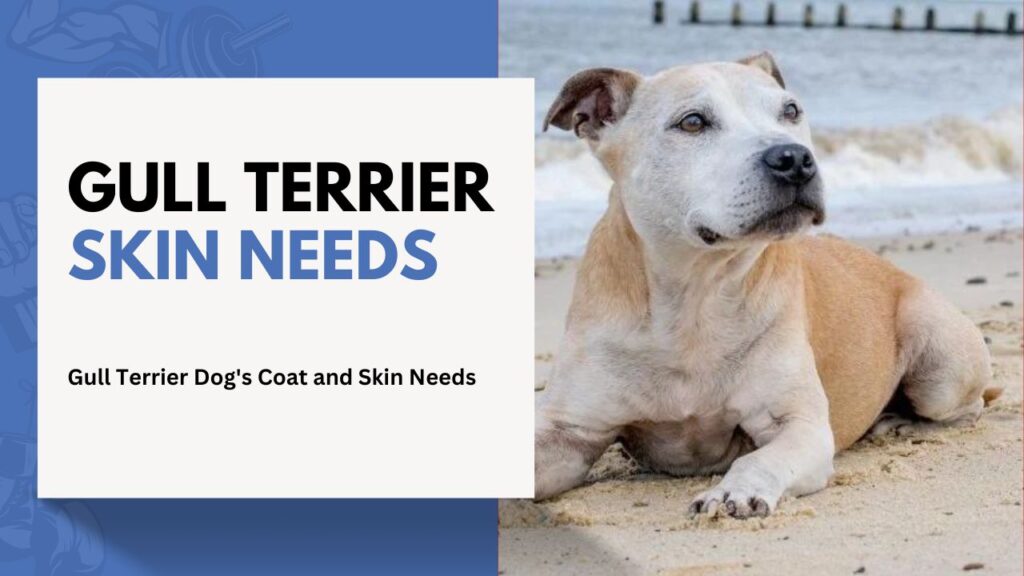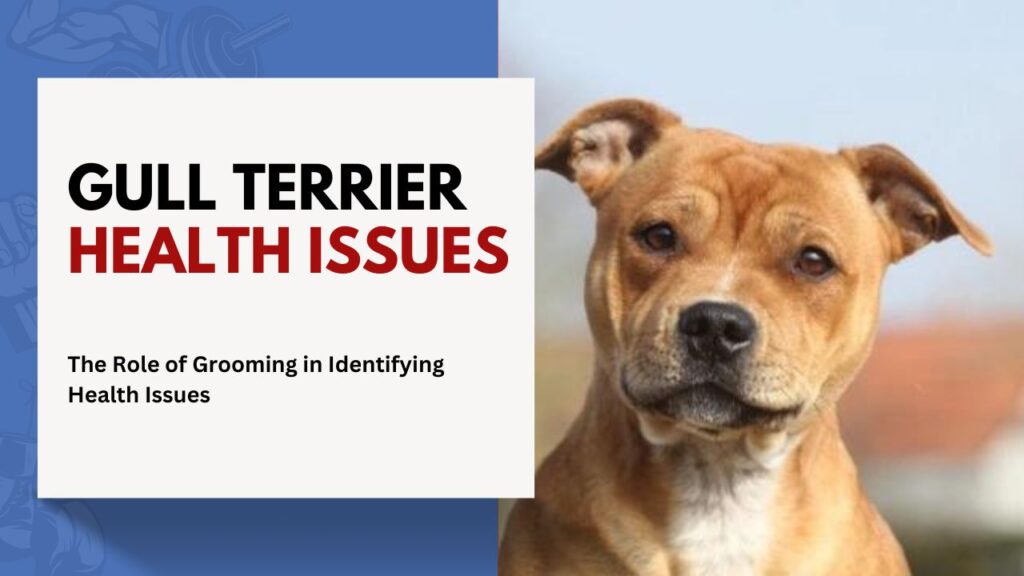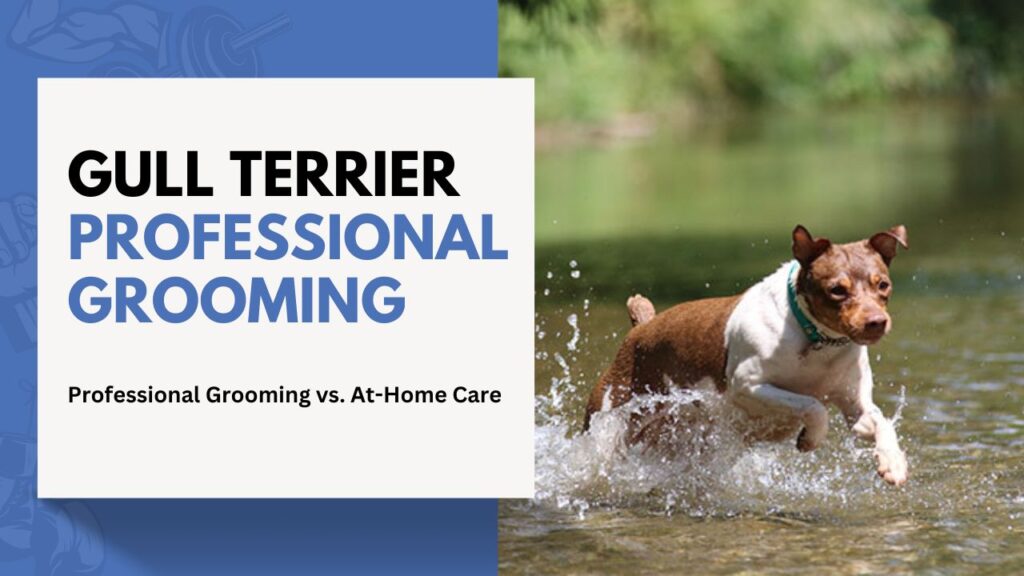Grooming Your Gull Terrier Dog for Health, Not Just Looks
Last Updated: April 11, 2024, Written by: Faisal Amin
Grooming for dogs, particularly for breeds like the Gull Terrier, is not just about maintaining a pristine appearance. These dogs, known for their muscular build and spirited nature, require regular grooming not only to look good but also to ensure their health. Regular dog grooming sessions provide an excellent opportunity to check for any underlying…
Grooming for dogs, particularly for breeds like the Gull Terrier, is not just about maintaining a pristine appearance. These dogs, known for their muscular build and spirited nature, require regular grooming not only to look good but also to ensure their health. Regular dog grooming sessions provide an excellent opportunity to check for any underlying health issues, making it an essential aspect of pet care for experienced dog owners. The importance of grooming in identifying health concerns early cannot be overstated, as it plays a crucial role in the overall well-being of the pet.
This article dig into the specific needs of the Gull Terrier’s coat and skin, highlighting how preventive grooming can ward off common skin conditions. Moreover, it discusses the emotional benefits grooming practices bring to both the dog and its owner and contrasts professional grooming solutions with at-home care routines. By emphasizing the essentials of nutrition and hygiene, the guide aims to equip readers with knowledge and techniques for effective groomer for dogs, ensuring their Gull Terrier looks and feels its best.
Gull Terrier Dog’s Coat and Skin Needs

Gull Terrier dogs boast a short, dense, and smooth coat that is relatively easy to maintain but requires specific care to preserve its health and shine. Regular grooming routines are essential for mitigating common skin issues and enhancing the dog’s overall health. Here are the key grooming practices you should consider:
Bathing Requirements:
- Frequency: Typically, a Gull Terrier should be bathed every 4-6 weeks. Adjustments may be necessary based on the dog’s activity level, existing skin conditions, and environmental factors.
- Signs a Bath is Needed: Keep an eye out for a noticeable odor, visible dirt or grease on the coat, excessive itching, or a dull appearance.
- Choosing the Right Shampoo: Select a shampoo tailored to your dog’s specific needs, such as formulas for sensitive skin, parasite prevention, or moisturizing properties if the dog has dry skin.
Brushing and Coat Maintenance:
- Brushing Frequency: Regular brushing helps remove loose hair and distribute natural oils across the coat, which is crucial since Gull Terriers shed throughout the year.
- Tools Recommended: Use a suitable brush that effectively captures loose fur without irritating the skin, such as a rubber curry brush.
Nutrition for Coat Health:
- Essential Nutrients: Ensure your Gull Terrier’s diet includes healthy fats and high-quality animal proteins to promote robust hair growth and nourish the skin.
- Impact of Poor Nutrition: Inadequate nutrition can lead to various coat and skin issues, such as dullness, excessive shedding, and increased susceptibility to skin infections.
By adhering to these grooming practices, you can help maintain your Gull Terrier’s coat in optimal condition, contributing significantly to their overall well-being and appearance.
Preventing Skin Conditions through Regular Grooming
Regular grooming sessions play a pivotal role in maintaining the health of a Gull Terrier’s skin and coat. By incorporating a routine that includes brushing, bathing, and thorough inspections, owners can significantly reduce the risk of common skin ailments and ensure their dog’s coat remains healthy and vibrant.
Skin Inspection and Parasite Prevention:
- Check for Skin Abnormalities: Each grooming session provides an opportunity to check the dog’s skin for rashes, dry patches, or parasites like fleas and ticks. Early detection of these issues is crucial as it allows for prompt treatment, preventing more severe conditions.
- Control of Parasites: Regular washing and the use of appropriate flea and tick control measures during grooming help maintain the dog’s skin free from these pests, which are often the cause of skin infections and other health problems.
Bathing and Coat Maintenance:
- Bathing Frequency: Depending on the dog’s activity level and environmental exposure, bathing should occur roughly every 2-3 months with a mild, dog-specific shampoo to maintain optimal skin and coat health.
- Benefits of Regular Bathing: It helps in removing dirt and potential allergens, which can cause irritation and skin conditions. The correct shampoo can also add moisture to prevent dryness and flakiness.
Brushing and Health Monitoring:
- Regular Brushing: Brushing not only helps in removing loose fur and dead skin cells but also stimulates blood circulation, enhancing the health and texture of the coat. It distributes natural oils evenly, which protects the skin and adds a healthy shine to the fur.
- Health Checks: Grooming sessions should include checks for bumps, scrapes, and signs of infections or wax buildup, particularly in the ears and around the eyes, which can indicate underlying health issues.
By adhering to these grooming practices, owners of Gull Terriers can not only keep their pets looking their best but also leverage grooming as a preventive tool against numerous health issues, enhancing their overall well-being.
The Role of Grooming in Identifying Health Issues

Grooming sessions for your Gull Terrier not only enhance their appearance but are pivotal in early detection of potential health issues. Here’s how grooming can be a gateway to ensuring your pet’s health:
- Skin and Coat Inspection: During grooming, professionals and pet owners can examine the dog’s skin and coat for signs of trouble. This includes identifying unusual lumps, inflammation, lesions, or rashes that might indicate infections or other health concerns. Regular checks allow for early intervention, which can simplify and shorten treatment processes.
- Ear, Eyes, and Dental Health: Groomers often inspect the ears for excess wax or signs of infection and check the eyes for irritation or abnormal discharge. Regular ear cleaning and dental care, including tooth brushing, are essential to prevent infections that can lead to more serious health issues.
- Parasite Detection: Grooming provides an excellent opportunity to check for external parasites like fleas, ticks, or signs of internal parasites, which might otherwise go unnoticed. Early detection and treatment of these parasites are crucial for preventing further health complications.
By incorporating these practices, grooming becomes a critical component of your Gull Terrier’s health regimen, ensuring they stay healthy and happy.
Grooming Practices for Emotional Well-being
Grooming your Gull Terrier not only maintains their physical health but also significantly influences their emotional well-being. Here are some practices that can help enhance the grooming experience for your dog, ensuring it is as stress-free and enjoyable as possible:
Desensitization and Positive Reinforcement:
- Touch Sensitivity: Gradually accustom your dog to being handled. Start by gently touching sensitive areas like paws and ears, and reward calm behavior with treats and praise.
- Positive Associations: Make grooming sessions enjoyable by incorporating playtime or a walk before the session. This can help the dog associate grooming with positive experiences.
Techniques to Reduce Anxiety:
- Exercise Before Grooming: A good play session can help tire your dog out and make them calmer for the grooming process.
- Aromatherapy and Pheromones: Utilizing dog-friendly aromatherapy, like lavender essential oil, or dog appeasing pheromones can help soothe anxiety.
- Muzzle Training: For dogs that show signs of stress or aggression, training them to comfortably wear a muzzle can make grooming safer and less stressful for both pet and groomer.
Creating a Calming Environment:
- Home Grooming: Grooming at home can reduce stress by keeping your dog in a familiar environment. Regular handling and grooming at home can also help your dog become more comfortable with the process.
- Professional Help: If grooming at home is challenging, consider a professional groomer who is experienced in dealing with anxious dogs. Some groomers specialize in creating a calming atmosphere for pets.
By implementing these strategies, you can help ensure that grooming is a positive experience for your Gull Terrier, which is essential for their emotional health and the strengthening of your bond.
Nutrition and Hygiene: The Essentials of Grooming
Maintaining optimal nutrition and hygiene is fundamental in grooming your Gull Terrier to ensure both their physical health and aesthetic appeal. Here’s a breakdown of the essential grooming practices focusing on nutrition and hygiene:
Essential Nutrients for Coat Health:
- Proteins and Fats: Serve as the building blocks for a healthy coat, providing the necessary nutrients to keep the fur thick and shiny.
- Vitamins and Minerals: These are crucial for preventing skin diseases and ensuring the overall health of your dog’s skin and coat.
- Supplements: Incorporating supplements like omega fatty acids can enhance the coat’s shine and improve skin texture.
Hygiene Practices:
- Dental Care: Regular brushing of your dog’s teeth prevents tooth decay and gum disease, crucial for overall health.
- Nail Trimming: Keeping the nails short prevents discomfort and reduces the risk of infection.
- Ear and Eye Care: Regular cleaning prevents infections and checks for any signs of illness.
Regular Grooming Schedule:
- Bathing: Use a gentle, pet-specific shampoo and bathe your Gull Terrier as needed based on their activity level and skin requirements.
- Brushing: Frequent brushing removes tangles and distributes natural oils throughout the coat, promoting health and vitality.
- Professional Grooming: For breeds with specific needs, professional grooming might be beneficial to address grooming aspects like hair trimming and styling that maintain both hygiene and appearance.
Implementing these practices will not only keep your Gull Terrier looking great but also in the best possible health.
Professional Grooming vs. At-Home Care

When deciding between professional grooming and at-home care for your Gull Terrier, it’s essential to consider various factors that affect both the dog’s comfort and the owner’s convenience. Here’s a detailed comparison to help you make an informed decision:
Comparison Table: Professional Grooming vs. At-Home Care
| Aspect | Professional Grooming | At-Home Care |
|---|---|---|
| Equipment and Tools | Access to specialized, high-quality tools and products. | Limited to basic tools; initial investment required. |
| Expertise | Professional expertise in breed-specific grooming needs. | Requires learning and practice to develop skills. |
| Time Efficiency | Quick and efficient; multiple pets can be handled per day. | Time-consuming; depends on the owner’s speed and skill. |
| Cost | Generally higher costs but includes expert care. | Lower cost overall; significant initial setup cost. |
| Convenience | Saves personal time and effort; appointment scheduling needed. | Flexible scheduling; no travel required. |
| Stress for Pet | Possible stress due to unfamiliar environment and animals. | Typically less stressful in familiar home settings. |
| Socialization | Opportunities for socialization with other animals. | Limited to household interactions. |
| Customized Services | Tailored grooming options like hand-stripping for terriers. | General grooming, unless owner learns specific techniques. |
Key Considerations:
- Skill and Knowledge Requirements: Grooming at home means you need a good understanding of your dog’s grooming needs. Mistakes in techniques such as bathing with improper water temperature or painful nail trimming can cause discomfort or fear in your pet.
- Professional Expertise: Groomers are trained to handle various breeds with specific needs and can often spot underlying health issues, which might be overlooked by the average pet owner.
- Cost-Effectiveness: While professional grooming represents a higher per-visit cost, it eliminates the need for purchasing and maintaining a range of grooming tools at home. However, combining both methods—regular at-home care with semi-annual professional appointments—can be a cost-effective strategy that benefits your pet’s health and appearance.
Choosing the right grooming approach depends on your individual circumstances, including how much time you can dedicate to learning grooming skills, your budget, and your dog’s temperament.
Explore Categories:
Conclusion
Throughout the comprehensive exploration of grooming and care for Gull Terriers, this article has underscored not just the aesthetic benefits but, more crucially, the health and well-being impacts of regular grooming practices. From the specifics of coat and skin care to the prevention of skin conditions and the role of grooming in detecting potential health issues, we’ve covered a range of essential practices. Additionally, the emotional well-being of your pet through grooming rituals and the importance of balanced nutrition and hygiene have been emphasized, highlighting the multifaceted importance of grooming in fostering a healthy and happy Gull Terrier.
In conclusion, grooming your Gull Terrier is a fundamental aspect of their care that extends beyond mere aesthetics to include significant health benefits. Adhering to a consistent grooming schedule, whether through at-home care or professional services, is essential for the prevention of common skin ailments, ensuring optimal coat health, and enhancing your pet’s overall quality of life. By integrating the knowledge and techniques outlined in this guide, Gull Terrier owners can ensure their beloved pets not only look their best but are also supported in leading a healthy, vibrant life. Remember, effective grooming is an act of love and care that reflects positively on the well-being of both the pet and the owner.
FAQs
1. How frequently should you groom a Terrier?
Terriers, known for their coarse or wiry coats, should ideally be groomed every 4-6 weeks. This frequency helps maintain their coat’s health and appearance.
2. What are the characteristics of a Gull Terrier?
The Gull Terrier is a robust, medium-sized dog with a muscular build, predominantly found in Pakistan and India. These dogs have large, erect ears and typically sport a white coat, although it’s common to see dark-colored markings on their faces and bodies.
3. Can I groom my dog at home, and if so, how?
Yes, you can groom your dog at home. Start by brushing, bathing, and thoroughly drying your dog. Use blunt-ended shears or small clippers with guide combs to trim hair over the eyes, around the private parts, and between the paw pads. For delicate areas, a number 10 blade is usually most effective.
4. Is it necessary to groom Terriers?
Yes, grooming is essential for Terriers due to their specific coat type. Regular grooming every 4-6 weeks is recommended to keep their coat in good condition and prevent skin issues. Other breeds may require different grooming schedules based on their coat type.
